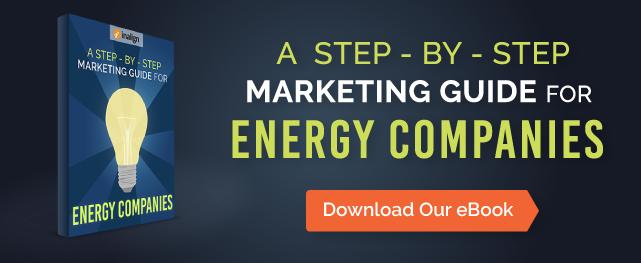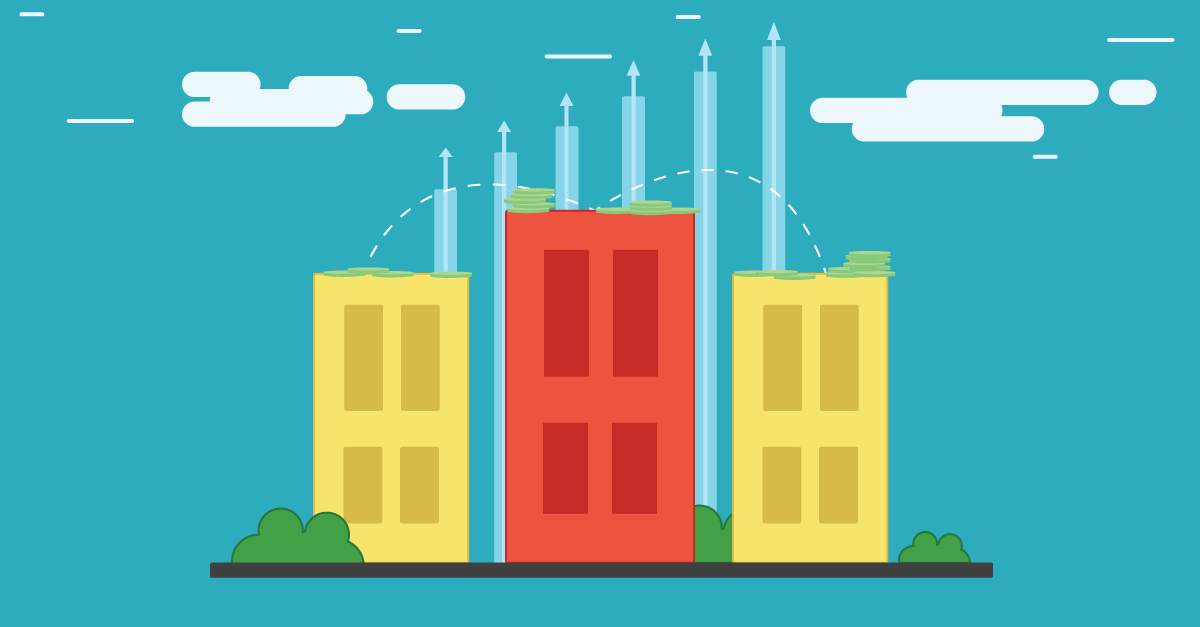
In many markets around the country residential and commercial consumers can now select their electricity and natural gas supplier. Competitive retail energy suppliers have emerged to provide competition and consumer choice in an industry that was once the sole domain of regulated utilities.
For retail energy suppliers, business growth depends upon reaching and convincing consumers to switch providers and buy from them. Since more consumers now shop and buy products online, your website may be the most important salesperson on your team.
That’s because today’s consumers rely less on traditional forms of advertising and more on online searches (including consumer reviews of product choices and companies), blogs (educational content that individuals and companies provide on their website to inform and answer consumer questions, but not sell products) and social media to research, learn about and make their buying decisions.
According to one B2B study, customers completed “nearly 60 percent of a typical purchasing decision … before even having a conversation with a supplier.” Consumers have taken control of the sales process and don’t want to talk to a sales rep until they’re almost ready to buy.
Consumers also want the convenience of making online purchases. According to a recent Forrester report, nearly 75 percent of B2B buyers say it’s more convenient to buy from a website than a sales rep and 93 percent prefer buying from a website rather than a sales rep when they’ve decided what to buy.
What does this mean for retail energy suppliers? It means that your company website must be designed to:
- Educate your prospective customers
- Qualify leads
- Send leads to the sales team at the right time
- Allow prospects to become your customers without talking to a sales rep
- Reduce customer turnover
Here’s how you can turn your retail energy website into your best salesperson:
1) Determine Who You Want to Reach
Determining who you want to reach is an often overlooked but critical first step to attracting the right prospects to your website. Why is it critical? Because all of the content you create for your website should be written specifically for the people you want to reach.
Who are the right prospects for your company? They are people with problems and pain points similar to the people you would consider to be your ideal customers or buyers of electricity and natural gas.
Your “Ideal” Commercial Customer
Think about your best commercial electric customers. What makes them an “ideal customer” for you? What problem(s) did they have that you solved for them and turned them into a long-lasting customer? Now think about your best commercial natural gas customers. Are they different from your best commercial electric customers or are they the same?
Your “Ideal” Residential Customer
Think about your best residential electric customers. What makes them an “ideal customer” for you? What problem(s) did they have that you solved for them and turned them into a long-lasting customer? How about your best residential natural gas customers? Are they different from your best residential electric customers or are they the same?
Defining your ideal customers (i.e., buyer personas) is more than just understanding their demographics. It's about understanding their needs, interests, concerns and where they can be reached online (e.g., social media, blogs, search engines).
2) Write Blog Articles That Are Helpful to Your Prospects
Blogging is one of the most effective ways to attract the right people (i.e., your ideal customers or buyer personas) to your website. Each blog article you write creates a new webpage on your website and another opportunity for your prospects to find you.
If you’re having a problem building traffic to your website, we recommend creating a blog for your website. You may even want to create more than one blog. For example, separate blogs for residential and commercial prospects.
What should you write about on your blog? Write about the topics your residential and commercial customers ask about most often. Also, write about what you believe customers should be asking about and why it’s important to them. For example, if you provide a value-added product or service talk about why it’s important to them.
Just remember to write articles that are educational and helpful, not salesy. Save the sales pitch for you site pages.
3) Create Premium Content That Your Prospects Will Value
When prospects visit your website you need to have a way for them to enter your sales funnel and become a lead. This is done by providing “premium” content. They may have found your website through an online search that led them to a blog article. Now, you want to give them something they will find valuable enough to provide you with their email address and other information. When they sign up they become a lead.
Premium content can include such things as eBooks, videos, case studies, webinars, calculators and more. Here are some examples of premium content you can make available on your website’s landing pages to convert visitors into leads:
- Create an eBook such as “You Have the Power to Choose: How to Shop for Energy.”
- Create a short video such as “How Small Businesses Can Reduce Energy Consumption and Costs.”
- Host a webinar for commercial customers such as “How to Take Control of Your Energy Costs.”
- Create case studies and testimonials showing the challenges some of your retail energy customers faced and the solutions you provided.
4) Nurture Leads Throughout the Buying Cycle
You can convert leads into long-lasting customers by providing timely information and answers that help move them towards a purchasing decision.
Here are a few examples of how you can turn your leads into customers:
- Create automated email lead nurturing campaigns for leads who download premium content on your website. Each campaign would consist of several emails designed to get your leads to request a consultation with a sales representative.
- Monitor your leads on social media and look for opportunities to interact with them.
- Set up a lead scoring system so that your sales team only works the hottest prospects. Score your leads based on their actions (e.g., downloading an eBook, frequent visits to your website, viewing a certain product page) and qualifications (e.g., job title, industry, company size).
- Integrate your website’s lead conversion forms with your company’s CRM software. This should be set up to allow two-way data sharing so that your sales team has all the information on a prospect and knows when the best time is to follow-up with a lead.
- Set up an automated workflow to send an email to a salesperson when one of their leads is active on your website or has take a certain action (e.g., is viewing a product page).
5) Give Leads a Choice in How They Can Become a Customer
As noted earlier, many buyers are not interested in talking to a sales rep. They find it more convenient to do everything online. Don’t miss out on these opportunities by not having the right content and forms on your website.
You can give prospects a choice in how they do business with you by sharing pricing information and letting them enter information that can be used to convert them into a customer.
We have built calculators and conversion forms specifically for retail energy suppliers.
6) Keep Customers Happy With Personalized Communications
Customer turnover is a significant issue for many retail energy suppliers. You got your customers because you had the right energy solutions for them. So, don’t leave them hanging. After all, it costs businesses 6-to-7 times more to acquire a new customer than to retain an existing one.
Here are a few examples of ways to stay engaged with and, hopefully, upsell your customers:
- Personalize periodic email messages with, for example, their name, company name and a link to content you know they are interested in.
- Provide special discounts for products or services they need and want. Make it available to them on your website, giving them another reason to stay connected with your company.
- Empower your customers by continuing to provide relevant information and recommendations that will enable them to succeed. If you know a customer’s main problem is reducing energy consumption, be helpful by providing recommendations to them on this topic.
- Monitor your customers on social media and look for opportunities to interact with them.
- Personalize calls-to-action on your webpages. If you have a propane customer, don’t show them an offer on your webpages for “How to Switch to Propane.” Instead, make sure your customers only see calls-to-action for things they need.
Conclusion
The process for turning your website into your best salesperson is called Inbound Marketing. It is a proven, data-driven approach to marketing to consumers based on how they research, learn about and make purchasing decisions.
Learn more by downloading our free eBook: “How to Increase leads, Grow Your Customer Base and Reduce Customer Turnover: A Step-By-Step Guide for Energy Services Companies.”








